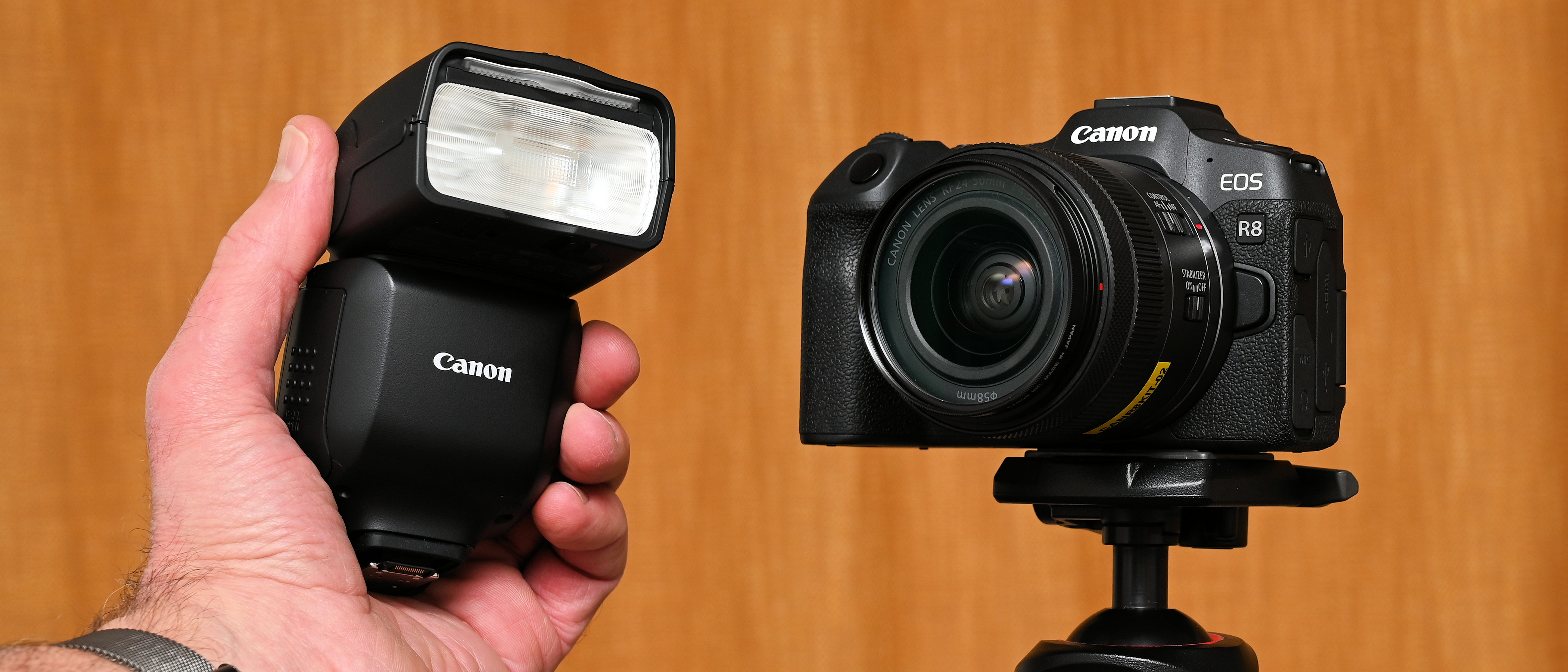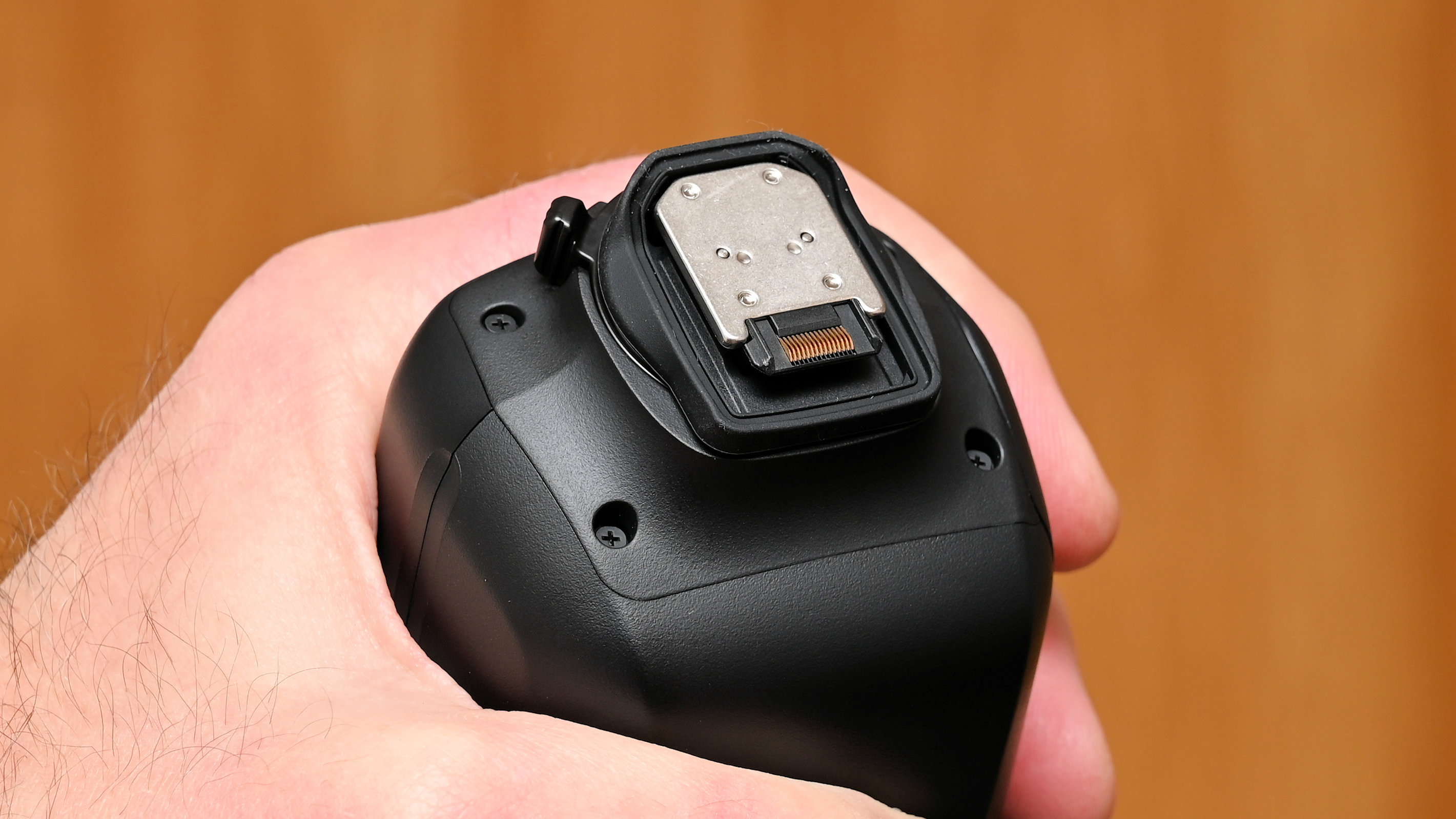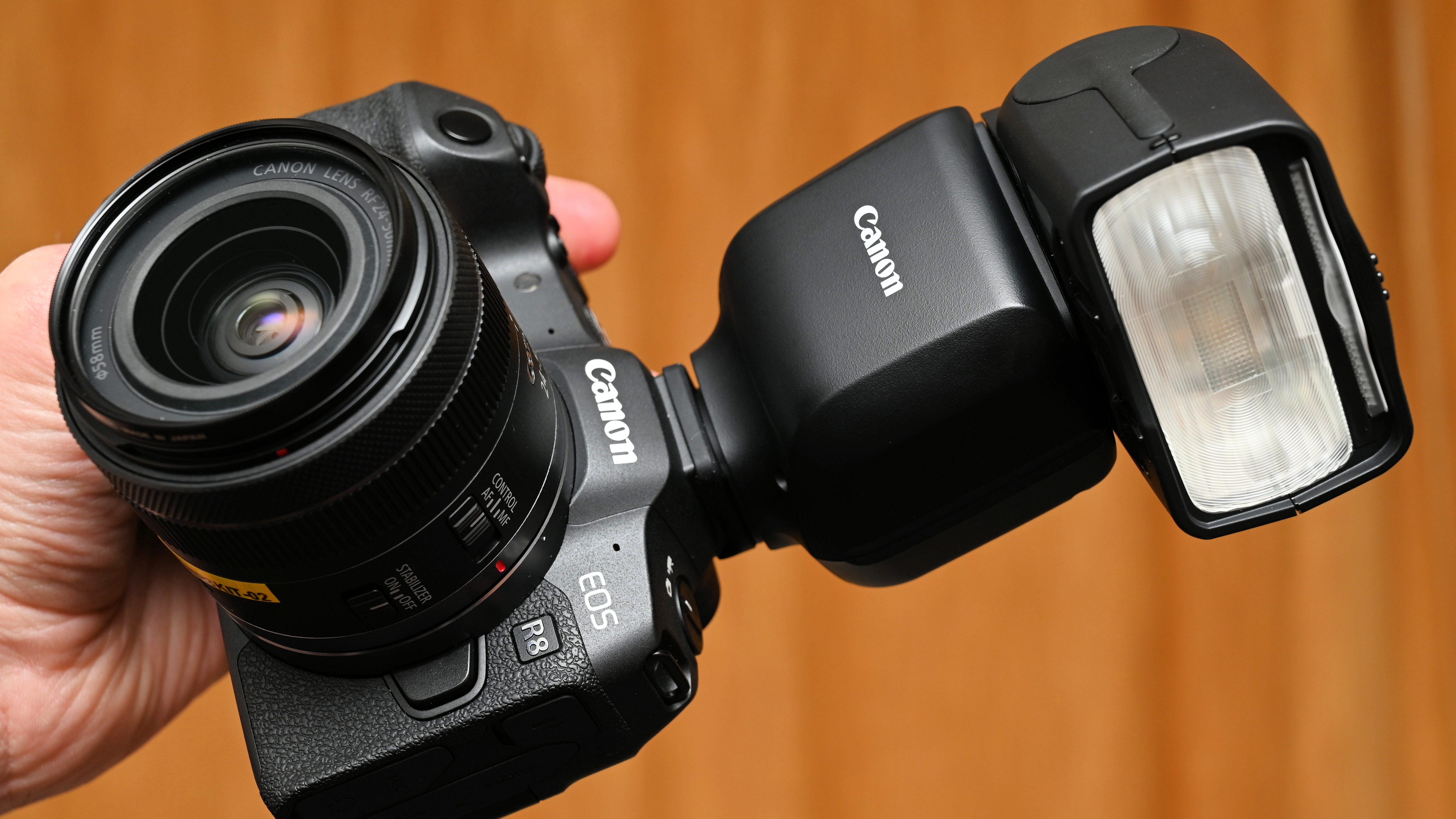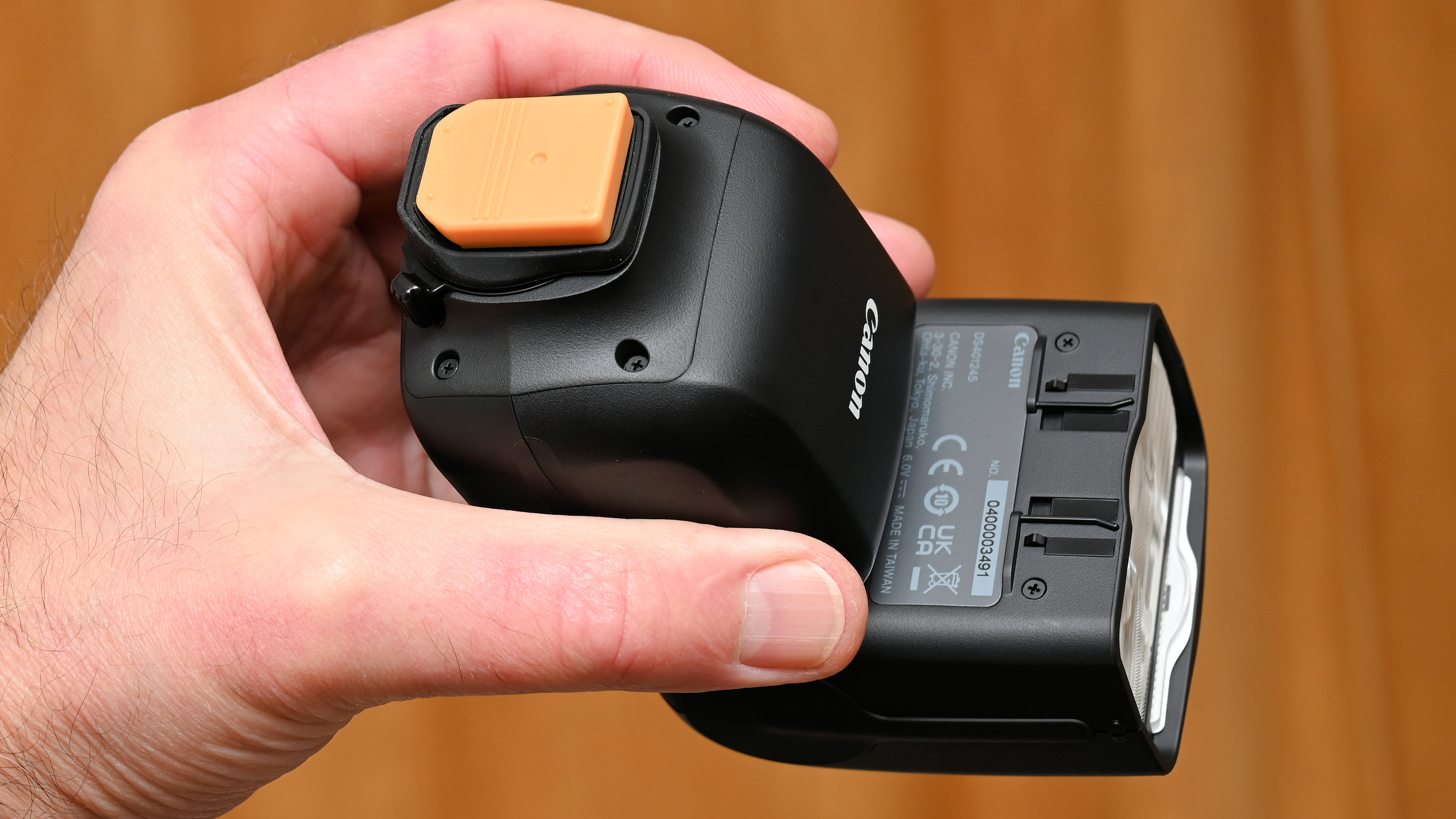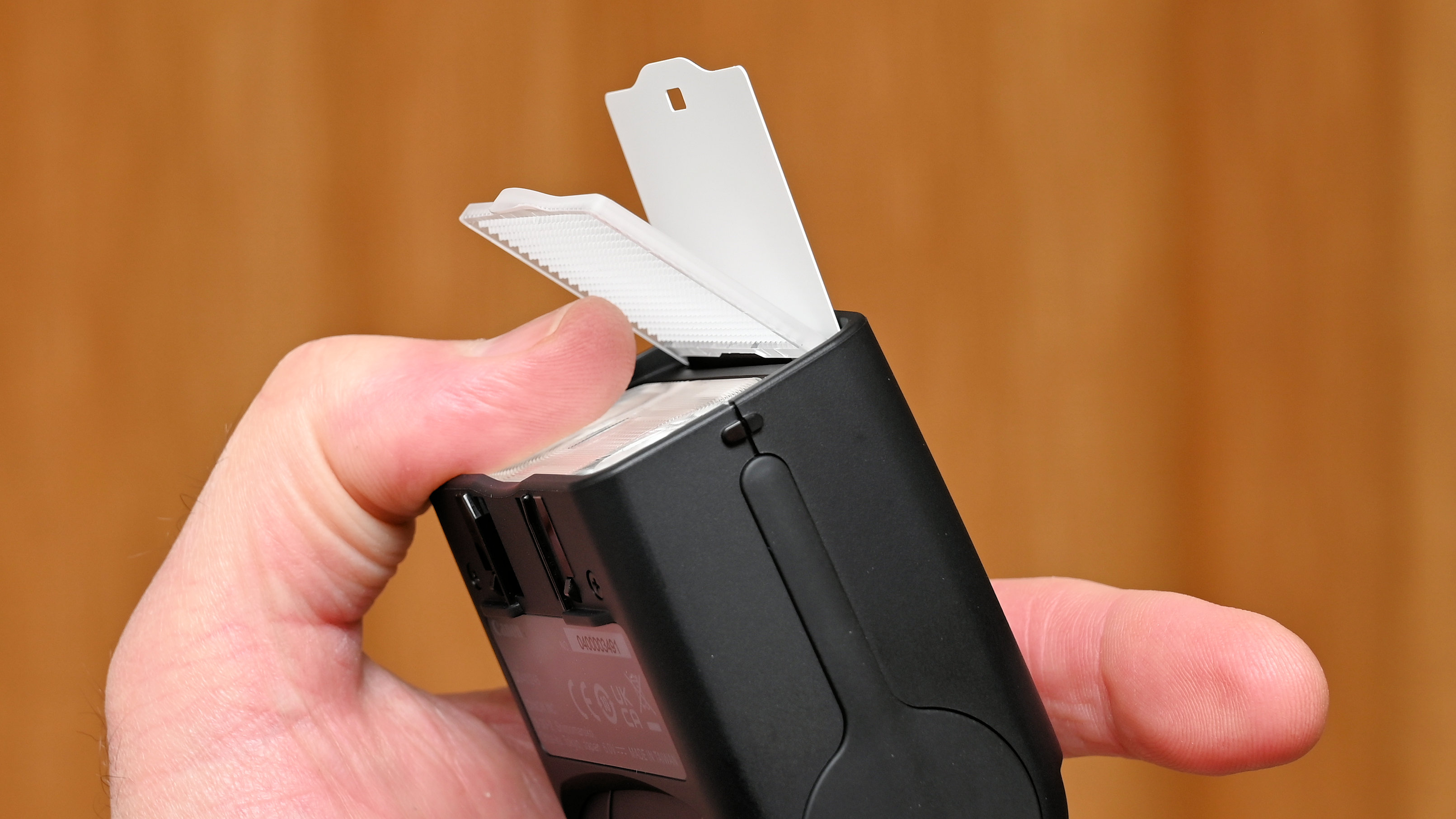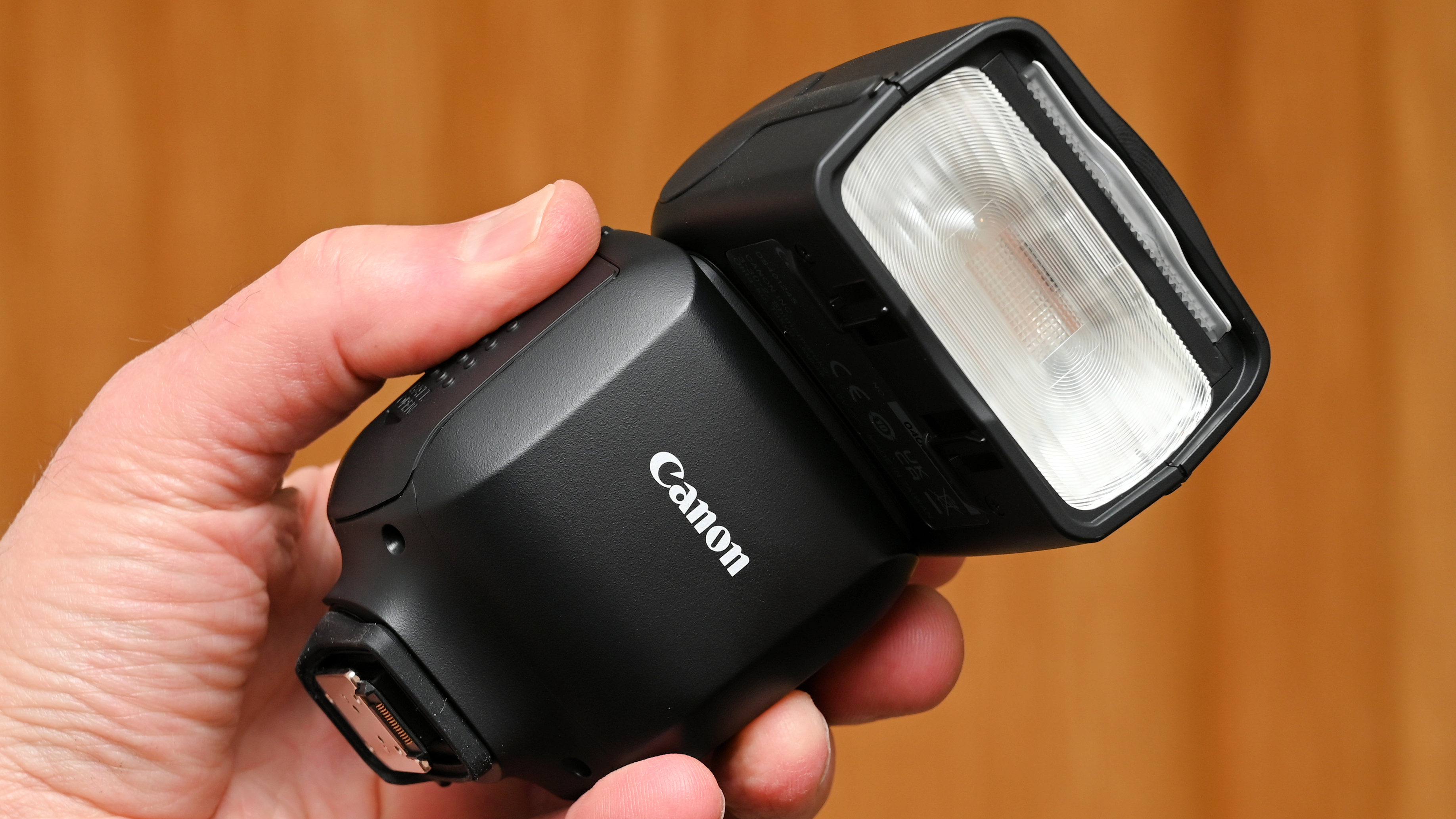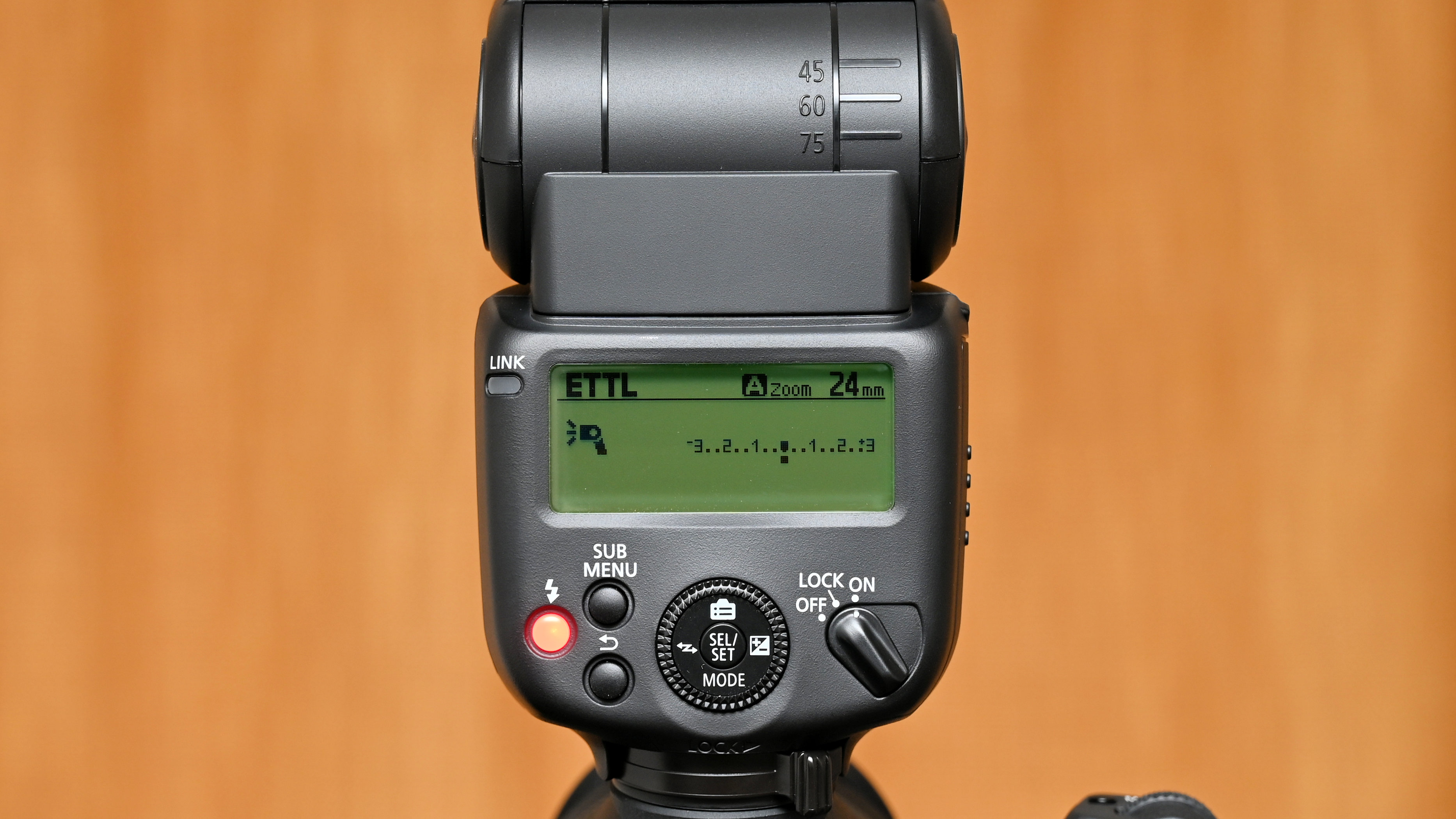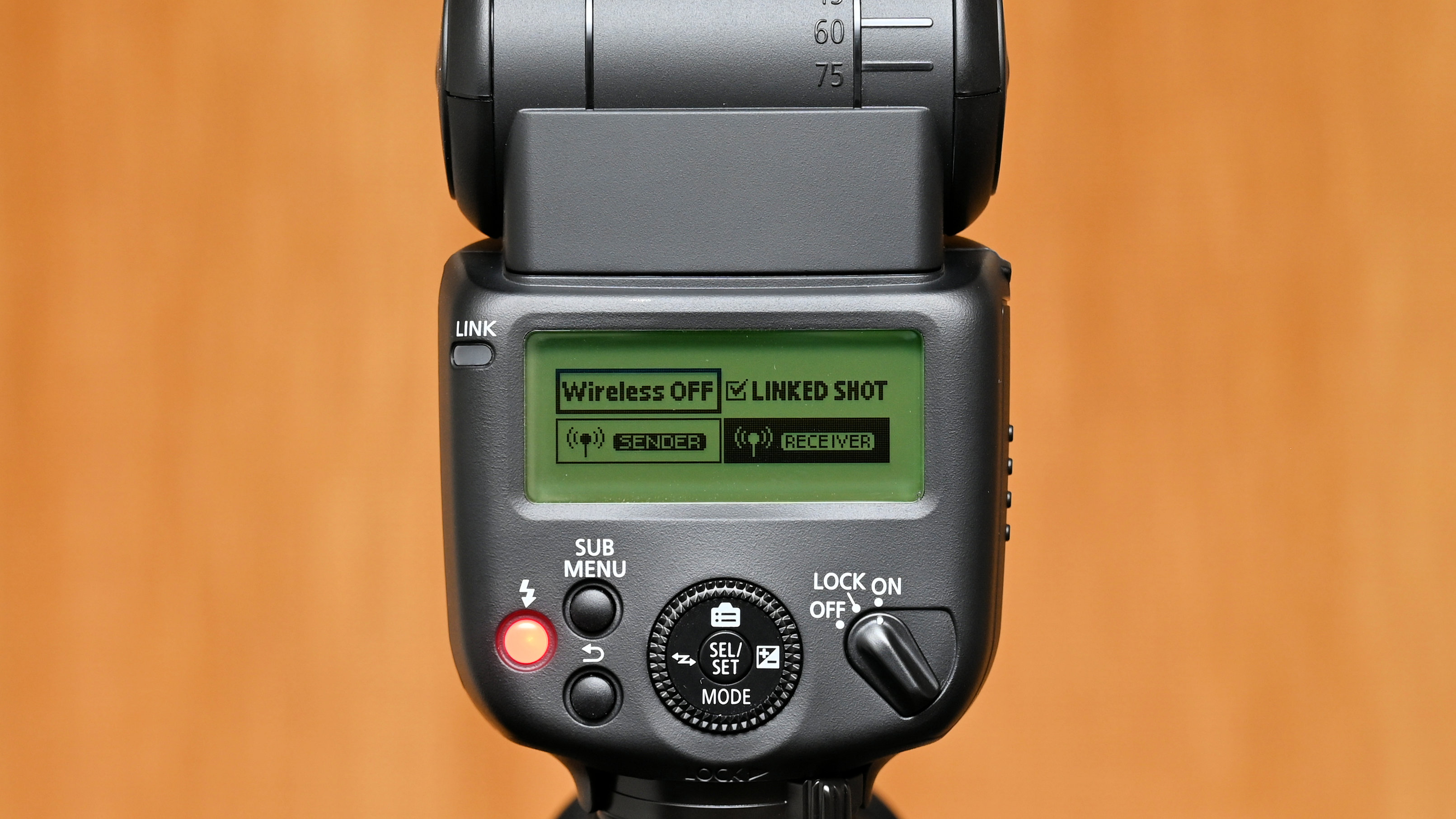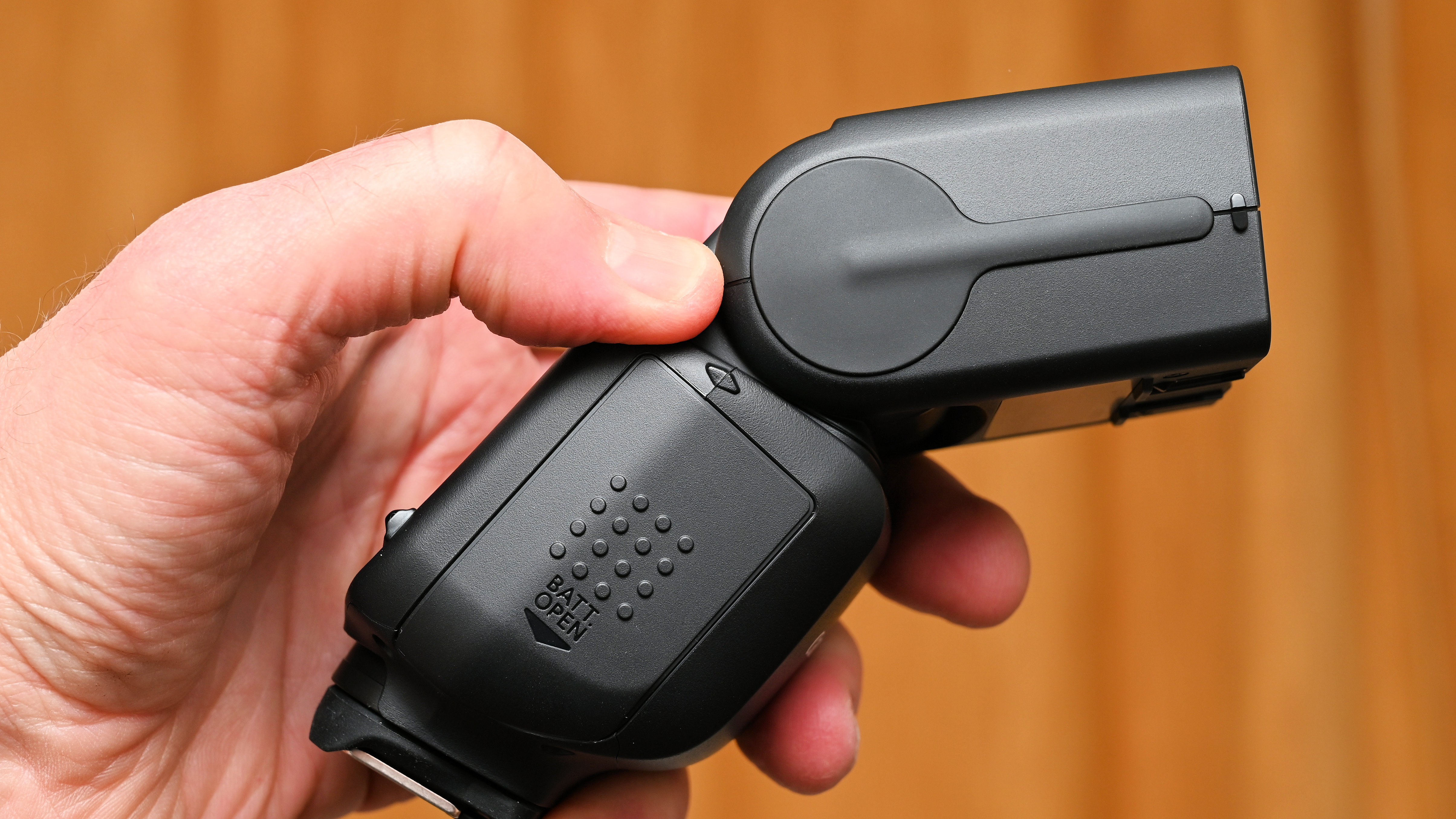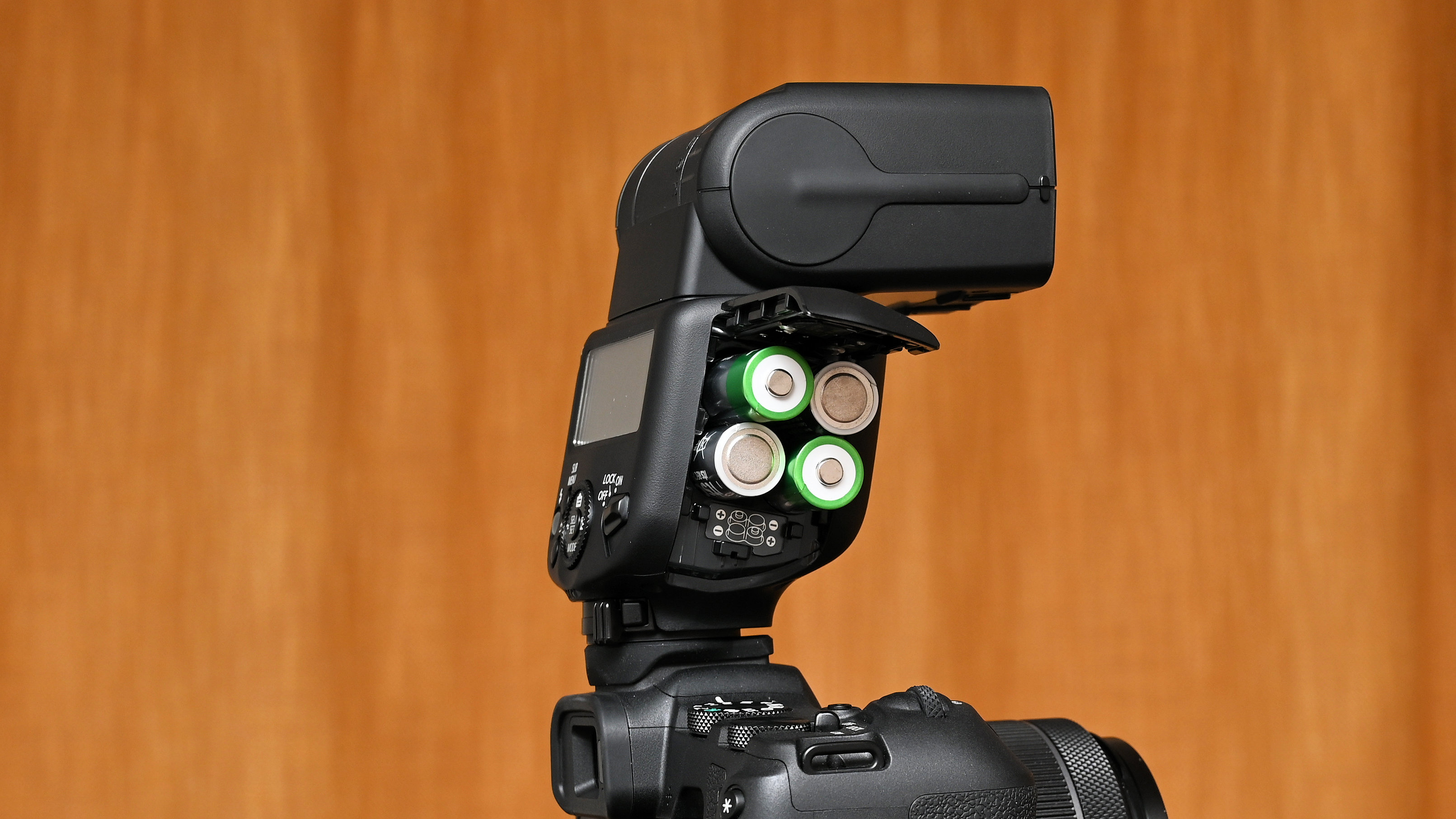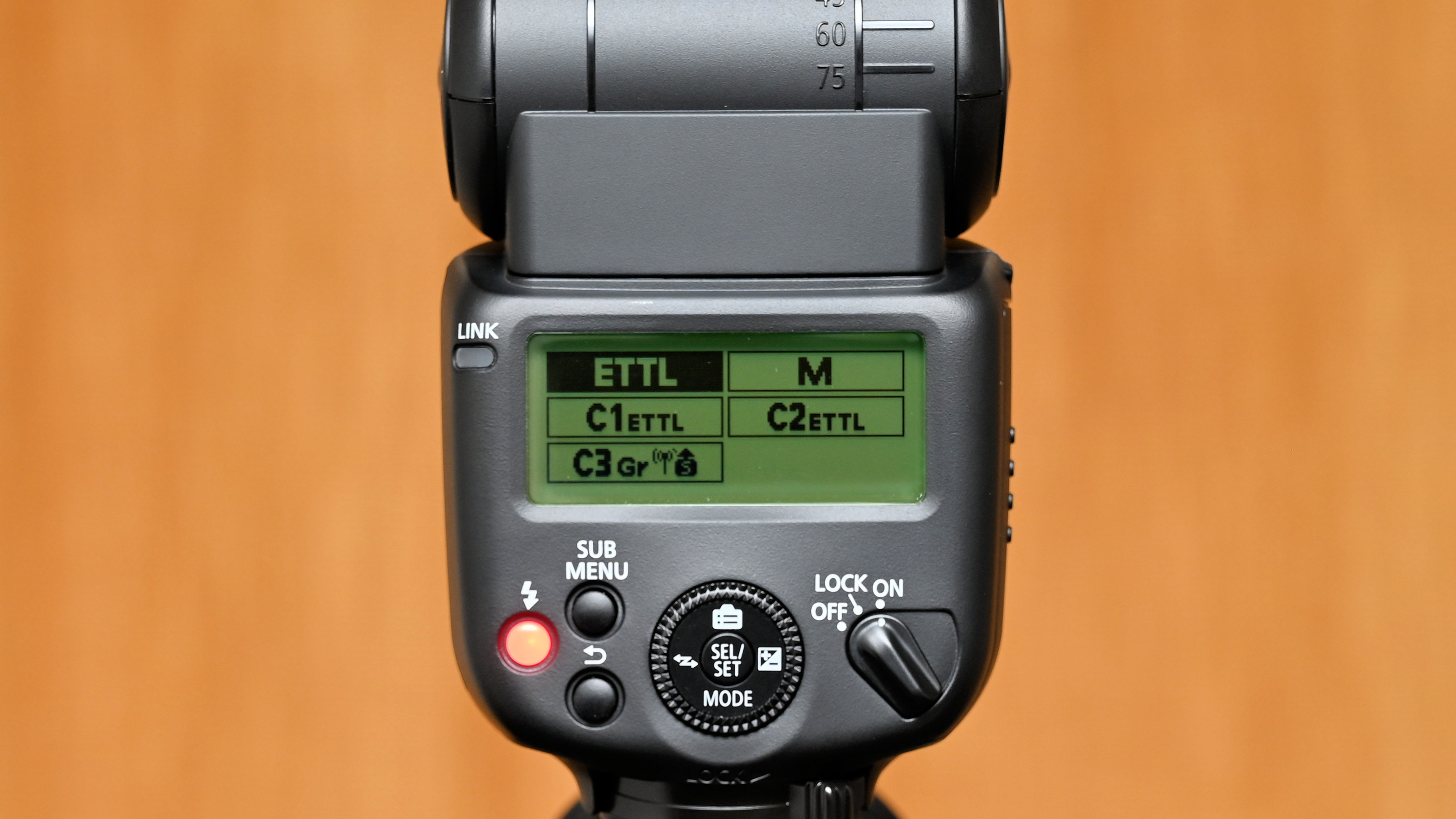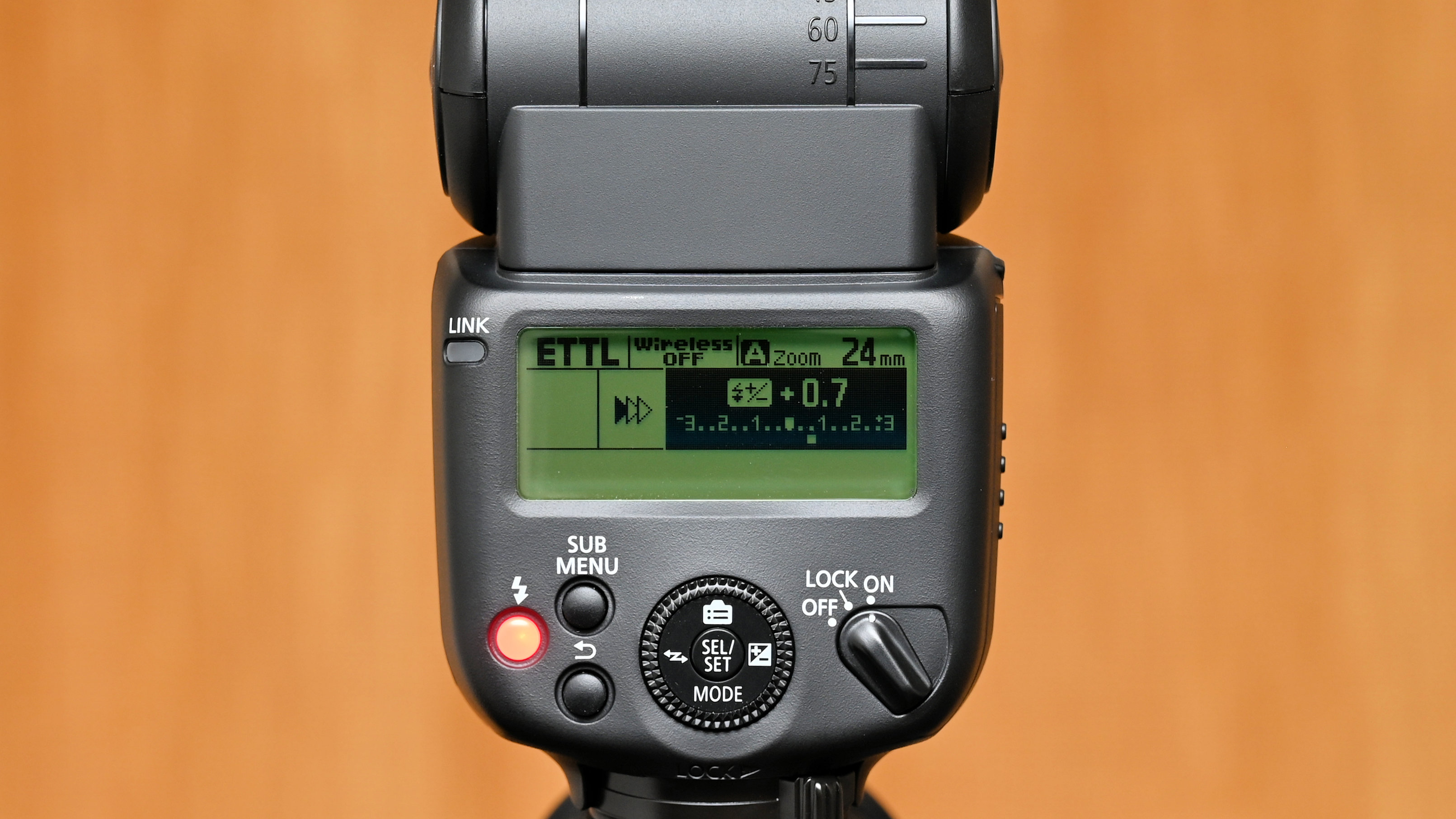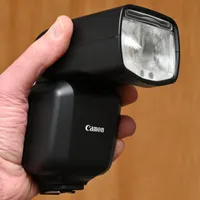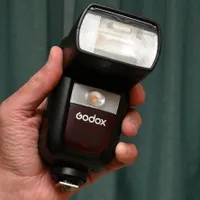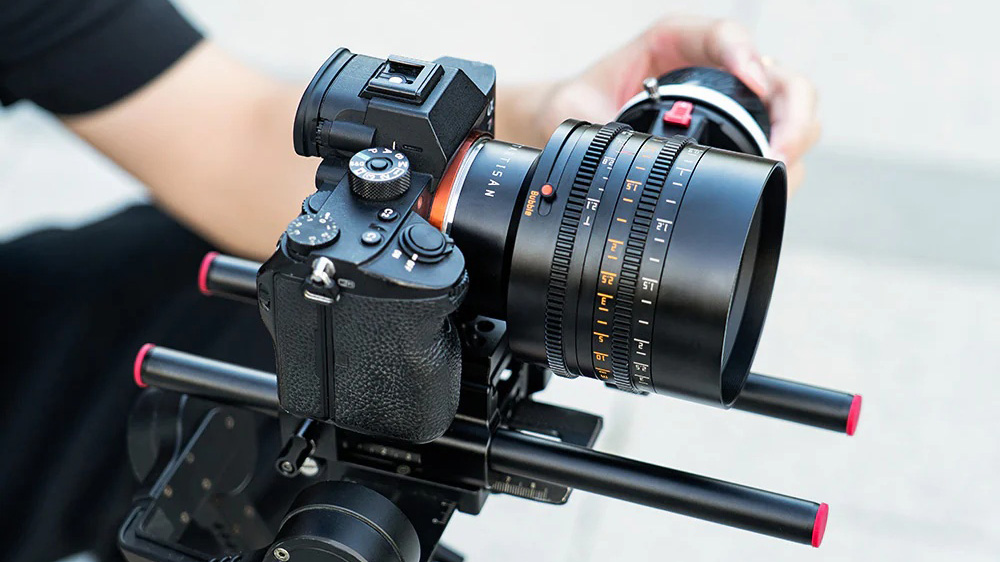Digital Camera World Verdict
I like that the Canon Speedlite EL-10 inherits so much of the 430EX III-RT’s DNA. That makes it simple, effective, versatile, affordable, fairly powerful and a joy to use. I’m not so keen that it lacks the 430EX III-RT’s almost universal compatibility and some of its neat bundled accessories.
Pros
- +
+Multi-function foot
- +
Wireless RF master/slave
- +
Intuitive control panel
Cons
- -
Incompatible with older cameras
- -
No AF-assist lamp
- -
Limited supplied accessories
Why you can trust Digital Camera World
I’ve used a Canon Speedlite 430EX III-RT for years. I actually preferred it to Canon’s range-topping Speedlite 600EX II-RT, as I enjoyed the more compact and lightweight build, and thought that the control interface was much more modern and intuitive. Indeed, the 430EX III-RT is still in production whereas the 600EX II-RT is now obsolete, the latter giving way to the newer top-end Speedlite EL-1.
So where does the new Speedlite EL-10 fit in? Well, it’s a direct replacement for the 430EX III-RT that caters to the latest mirrorless cameras. It’s actually Canon’s second Speedlite to feature the new multi-function foot, following on from the Speedlite EL-5, designed to slot into the multi-function shoe of the latest EOS R system mirrorless cameras, so far including the R1, R3, R5 Mark II, R6 Mark II, R7, R8, R10 and R50. The new 21-pin multi-function shoe enables more extensive communication between the camera and Speedlite, as well as other accessories. However, all of Canon’s latest EOS R system cameras that I’ve listed, apart from the EOS R50, also feature a conventional 5-pin connector in the base of the shoe, in addition to the relatively thin strip of 21-pin gold contacts at the front. The upshot is that the 430EX III-RT is compatible with all Canon EOS DSLRs and mirrorless R system and M system cameras apart from the EOS R50, whereas the EL-10 is only compatible with the very latest R system cameras. Even so, it aims to be one of the best flashguns for Canon cameras.
Canon Speedlite EL-10: Specifications
| Max power (longest zoom) | Gn 40 (ISO 100, meters) |
| Bounce (degrees) | 0 to 90 degrees |
| Swivel (left/right) | 150 / 180 degrees |
| Zoom Range | 24-105mm |
| Flash Exposure Compensation | +/-3EV |
| Manual Power Settings | 1/1 to 1/1024 |
| Additional Flash Modes | HSS, RC |
| Dimensions (WxHxD) | 71x116x98mm |
| Weight | 287g |
Canon Speedlite EL-10: Price
I feel that the Speedlite EL-10 is quite reasonably priced for an own-brand Canon flashgun. It’s widely available for around £249/$199, making it much more budget-friendly than the older Speedlite 430EX III-RT in the USA, which sells for £279/$299. It’s naturally more expensive than the more basic Speedlite EL-100 (£179/$149), and costs less than the Li-ion powered Speedlite EL-5 (£349/$299). By comparison, the range-topping Speedlite EL-1 is massively expensive at £1199/$1099.
However, there are some powerful, feature-rich Li-ion powered flashguns at very competitive prices, if you’re prepared to go with an independent manufacturer of Canon dedicated flashguns, including the Godox VING V860III (£190/$229), Godox V1 (£197/$229) and the Hahnel Modus 600RT Mk II WK (£299/$289 complete with RF wireless trigger). These three independents make the Speedlite EL-10 look quite expensive for an AA battery-powered flashgun with a mid-range feature set.
Canon Speedlite EL-10: Design & Handling
I love the design and handling of the Canon Speedlite EL-10. It’s almost exactly the same as the 430EX III-RT, which is one of my all-time favorite Canon Speedlites. As such, it’s reasonably compact and lightweight at 71x116x98mm and 287g. An upside for use with smaller models in the range of EOS R system cameras is that it feels a natural add-on in terms of size and weight, without making the camera feel top-heavy when the Speedlite is mounted in the multi-function shoe.
I’m less convinced about the multi-function shoe itself. Instead of five heavy-duty connection pins, there’s a row of 21 very thin gold-plated pins. The ones in the shoe are concealed beneath the front edge and fairly well protected. The pins in the Speedlite’s foot are more open to the elements and look fragile, and likely to be easily damaged. The Speedlite is actually supplied with a protective rubber cover that slips over the foot, which wouldn’t be needed with the old 5-pin arrangement. The plus point is that the 21-pin arrangement enables greater communication between the camera and Speedlite. For example, you can set up three custom flash modes for instant recall, when you need to make changes in a hurry. You can also make adjustments to the Speedlite via Canon’s Camera Connect smartphone app.
The EL-10 has a fairly strong Gn 40 maximum power rating (ISO 100, meters), slightly less than the Gn 43 of the 430EX III-RT. It also inherits the same bounce and swivel mechanism, with 24-105mm motorized zoom, 0-90 degrees vertical bounce, 150 degrees of swivel to the left and a full 180 degrees of swivel to the right. Further finery includes a flip-down wide-angle diffuser panel rated at a focal length of 14mm in full-frame terms, and a pull-out white catchlight card.
The best camera deals, reviews, product advice, and unmissable photography news, direct to your inbox!
Unlike the Canon Speedlite EL-5 and EL-1, as well as the Godox and Hahnel flashguns that I’ve mentioned, the EL-10 runs on a conventional set of four AA batteries, rather than a Li-ion battery pack. That’s good and bad news, as far as I’m concerned. On the plus side, AA batteries are universally available and cheap to replace, whereas additional Li-ion battery packs tend to be expensive, if you feel the need for a spare. However, you can typically get many more full-power flashes from a fully charged Li-ion battery pack, than from a set of four AA batteries, along with faster recycle speeds between high-power flashes. Even so, it’s well worth using some of the best Ni-MH rechargeable AA batteries, rather than alkaline cells, as recycle speeds can be significantly faster and they can last up to two to three times as long as alkaline cells. I’ll come back to that later, in ‘performance’.
As I’d expect, the EL-10 supports full E-TTL / E-TTL II ‘through the lens’ flash metering, for automatically adjusting the flash intensity to give a ‘correct’ exposure, complete with +/-3EV flash exposure compensation. In manual mode, power adjustment goes lower than in the 430EX III-RT, right down to 1/1024 of full power compared with 1/128, for really subtle or close-up flash. As also expected, the EL-10 includes slow-sync, high-speed sync and rear-curtain modes. However, there’s no programmable repeat or ‘stroboscopic’ flash mode, as featured on the less expensive EL-100, as well as in the more up-market EL-5 and EL-1.
For communication and remote triggering of off-camera flash, the EL-10 features wireless RF connectivity with a range of up to 30 meters. As with the 430EX III-RT, the EL-10 can work in both master and slave wireless modes, with up to 15 channels available in five different groups. Unlike the older Speedlite, however, there’s no infrared wireless slave mode, so it’s RF or nothing.
All in all, the EL-10 looks and feels very similar to the 430EX III-RT that it replaces. However, the new model strips out some of what makes the older Speedlite so appealing. First up is compatibility. The EL-10 can only be used on-camera with the very latest EOS R system cameras. The 430EX III-RT is compatible with everything, although you’d need to use a Multi-Function Shoe Adapter AD-E1 to mount it on the EOS R50, which lacks a 5-pin plate. Another obvious omission is that the EL-10 strips out the red AF-assist lamp. That’s fair enough to some extent, as mirrorless cameras for which it’s designed can’t make use of this anyway. Even so, a replacement LED lamp would have been welcome, rather than the annoying flickering flash for autofocus assist, on which the EL-10 relies.
I also liked that the 430EX III-RT was supplied complete with a clip-on diffusion dome and a tungsten color matching panel, both of which were automatically registered when fitting them to the flashgun, and both of which are absent with the EL-10. Also gone is the pushbutton locking mechanism on the right hand side of the head, to avoid accidentally shifting the head from its horizontal orientation into bounce mode.
Canon Speedlite EL-10: Performance
Maximum output power is an important facet of any flashgun’s performance. It’s not so much of an issue for direct flash, but strong power levels are often required when you’re bouncing flash of high ceilings or walls. The maximum power rating of the EL-10 is stated at Gn 40 (ISO 100, meters), which is slightly less than the Gn 43 of the 430EX III-RT. Sure enough, in my tests, I found there was a little less maximum power available from the EL-10 throughout the entire 24-105mm zoom range. I actually found very little difference in maximum power output between the EL-10 and the smaller EL-100 at 24mm and 50mm zoom settings, although the EL-100 only offers these two zoom options, set manually rather than being motorized. The maximum power output of the EL-10 grows larger at longer zoom settings, as the beam of light is focused more tightly.
Another major performance factor is recycling speed between flashes. Nobody wants to miss a vital shot because they were waiting for their flashgun to recycle. The EL-10 is at a disadvantage compared with some of the latest models that run on Li-ion battery packs. After a full-power flash (which itself is significantly more powerful) the Li-ion powered EL-5 and EL-1 recycle in just 1.2 seconds and 0.9 seconds respectively. Even so, the EL-10 is no slouch, and is actually very quick for an AA-powered Speedlite. It’s worth bearing in mind that recycle speeds with alkaline batteries drop off at a fairly constant rate as soon as you start using them, and the overall battery life isn’t great either. Use some of the rechargeable AA batteries, typically with a capacity of around 2500mAh to 2800mAh, and you can generally get more than twice as many full-power flashes as with alkaline batteries. Recycle speeds also tend to stay pretty much the same until NiMH batteries are virtually exhausted. Using fresh batteries, I got recycle speeds after a full-power flash of around 1.8 seconds with NiMH batteries and 2.6 seconds with alkaline cells.
A performance boost in practical terms is that it’s easy to configure three custom settings for the EL-10, from the host camera. It can be a major bonus if you’re working in pressured, time-sensitive scenarios like weddings and events. It’s great being able to call up specific flash modes and settings on demand, in double-quick time.
It’s also good to be able to count on the accuracy and consistency of through-the-lens flash metering. As with every other recent Canon Speedlite that I’ve tested, TTL accuracy is very impressive, although I find I often prefer to dial in a little plus or minus flash exposure compensation for creative effect.
Canon Speedlite EL-10: Lab Results
We test all available features for each flashgun that goes through out labs. To test power output, we used a Sekonic flash meter placed at a distance of one meter from each flashgun. We check the complete range of manual power settings, in one-stop increments. Based on a sensitivity of ISO 100, the figures correlate directly with the Gn (Guide number). The results are double-checked by taking shots of a gray card with the appropriate lens apertures and using the camera’s histogram display in playback mode. This is typically done for flash zoom settings of 24mm, 50mm and 105mm, plus 200mm where available.
We also check the accuracy and consistency of electronic/intelligent TTL (Through The Lens) flash metering, and the speed with which each flashgun can recycle to a state of readiness after a full-power flash, using both Ni-MH and alkaline cells, or a Li-ion power pack where supplied.
Power output
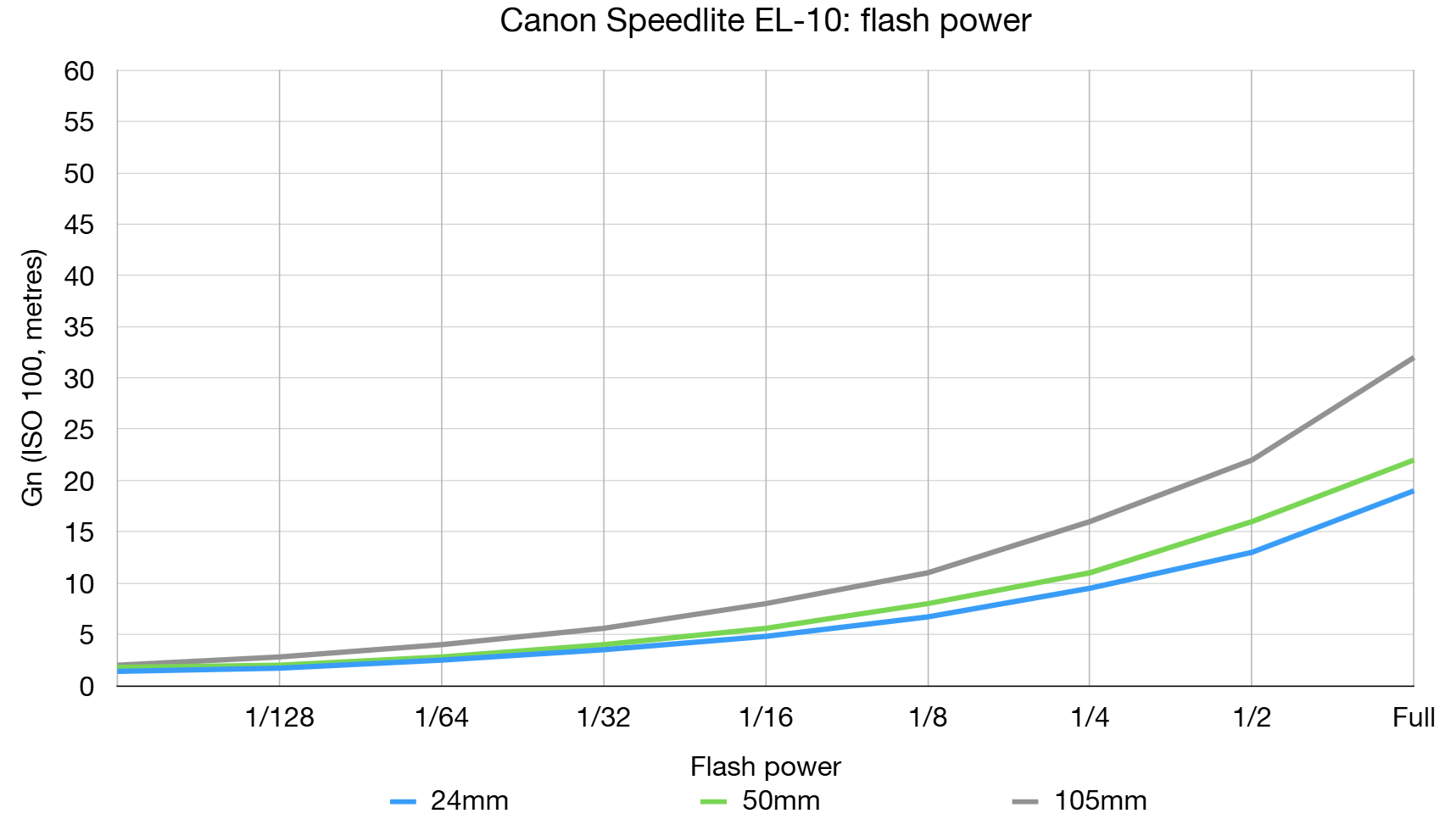
Maximum power output falls short of the more up-market Canon Speedlite EL-5 and EL-1 but is still respectable for a relatively compact and lightweight flashgun. It’s a little down on that of the 430EX III-RT, more similar to the EL-100 at directly competing 24mm and 50mm zoom settings, although a greater zoom range is available in the EL-10, up to 105mm.
Recycle speed
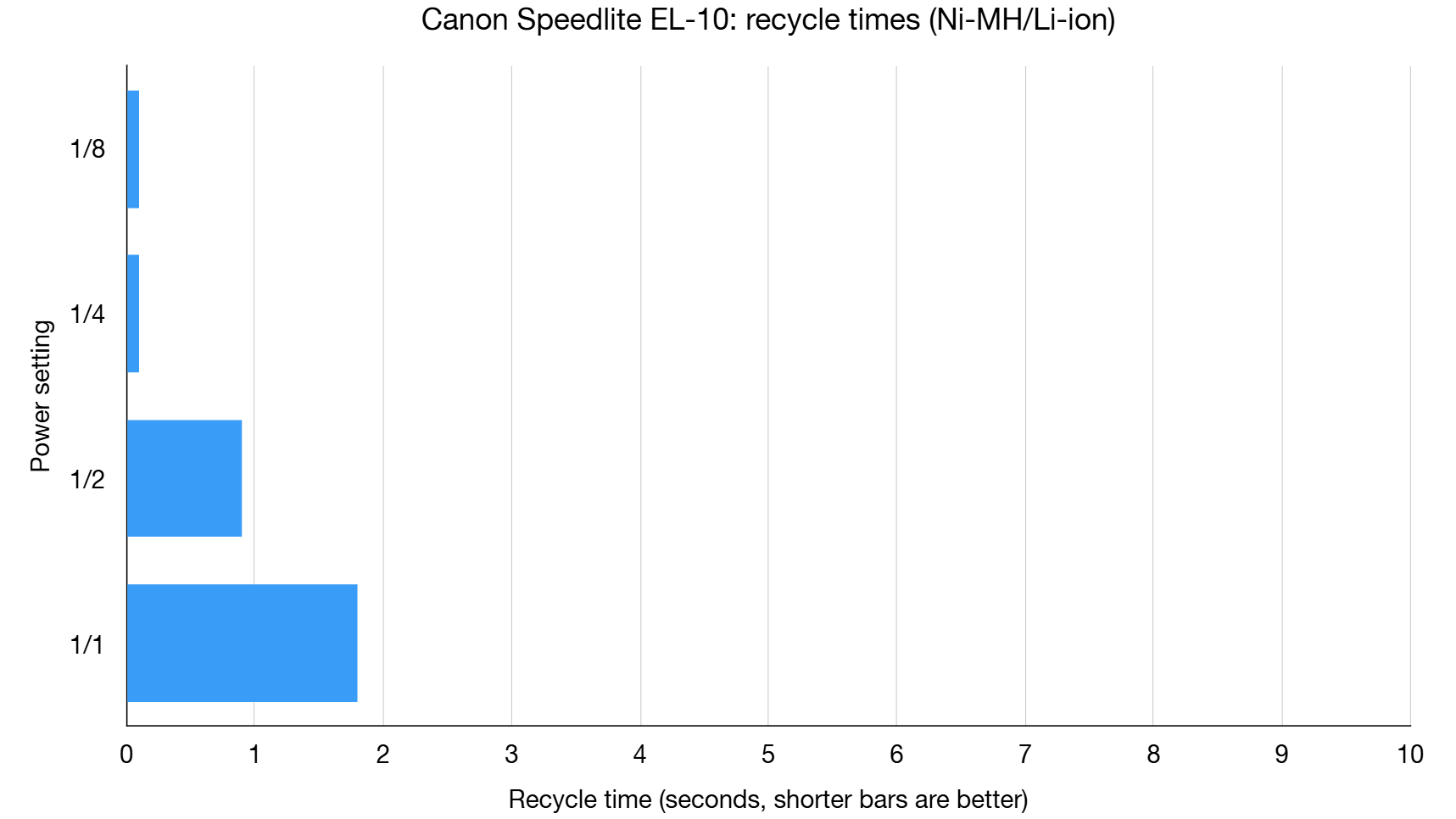
Recycle speeds tend to be very fast at low-power flash settings, as I’d expect. They’re still pretty quick at medium to full-power settings, especially for an AA battery-powered flashgun, but not quite a match for most flashguns that run on a Li-ion power pack.
TTL accuracy (+/-EV): 0
I’ve grown accustomed to own-brand Canon Speedlites having very accurate and consistent E-TTL flash metering, and the EL-10 follows suit, with zero deviation from perfect metering.
Canon Speedlite EL-10: Verdict
I generally feel that the march of progress is a necessary journey, and I fully accept that things can’t remain backwards-compatible forever. I like that the EL-10 makes the most of Canon’s new 21-pin multi-function shoe, but I’m not fully convinced about the robustness of all those tiny, thin and very exposed gold contacts built into the Speedlite’s foot. Time will tell. In other respects, I feel that the EL-10 inherits nearly all of the good stuff from the 430EX III-RT on which it’s based, although it’s a shame there’s no proper AF-assist lamp (an LED would have been nice), nor the diffusion dome and tungsten color balance filter that were supplied with the older Speedlite.
| Features | There’s a good selection of mid-range features but no Li-ion power pack nor stroboscopic flash. | ★★★★ |
| Design | The EL-10 has an intuitive control system and feels very well made apart from the questionable robustness of its mounting foot. | ★★★★ |
| Performance | Maximum output power is respectable, TTL metering accuracy is good and recycle times are pretty quick for an AA-based flashgun. | ★★★★ |
| Value | It’s good value for an own-brand Canon Speedlite but pretty poor value compared with independents from the likes of Godox and Hahnel. | ★★★★ |
Should you buy the Canon Speedlite EL-10?
✅ Buy this...
- You want an own-brand, mid-range Canon Speedlite and you have an EOS R1, R3, R5 Mark II, R 6 Mark II, R7, R8, R10 or R50 that features a compatible multi-function shoe.
- You prefer a Speedlite that’s fairly compact, lightweight and easy to use, compared with more exotic fare that tends to be bigger, heavier and more expensive.
🚫 Don't buy this...
- You’d prefer a flashgun that runs on a Li-ion battery pack instead of AA batteries, able to deliver faster recycle speeds between high-power flashes and longer-lasting stamina.
- You feel the need for a flashgun that has a fuller range of advanced flash modes, for example including programmable repeat or ‘stroboscopic’ output.
Alternatives
The Canon Speedlite EL-5 is the next step up in the price ladder. Again, it features the new 21-pin multi-function foot for expanded camera/flashgun communication with select EOS R system cameras, while adding a secondary LED lamp and Li-ion battery pack. It costs around £349/$299.
The Godox VING V860III is one of my personal all-time favorite flashguns. It’s compatible with all Canon EOS cameras apart from the EOS R50, for which you’d need to use the multi-function shoe adapter, but is Li-ion powered and has a full set of advanced features for the bargain price of £190/$229.
Matthew Richards is a photographer and journalist who has spent years using and reviewing all manner of photo gear. He is Digital Camera World's principal lens reviewer – and has tested more primes and zooms than most people have had hot dinners!
His expertise with equipment doesn’t end there, though. He is also an encyclopedia when it comes to all manner of cameras, camera holsters and bags, flashguns, tripods and heads, printers, papers and inks, and just about anything imaging-related.
In an earlier life he was a broadcast engineer at the BBC, as well as a former editor of PC Guide.
